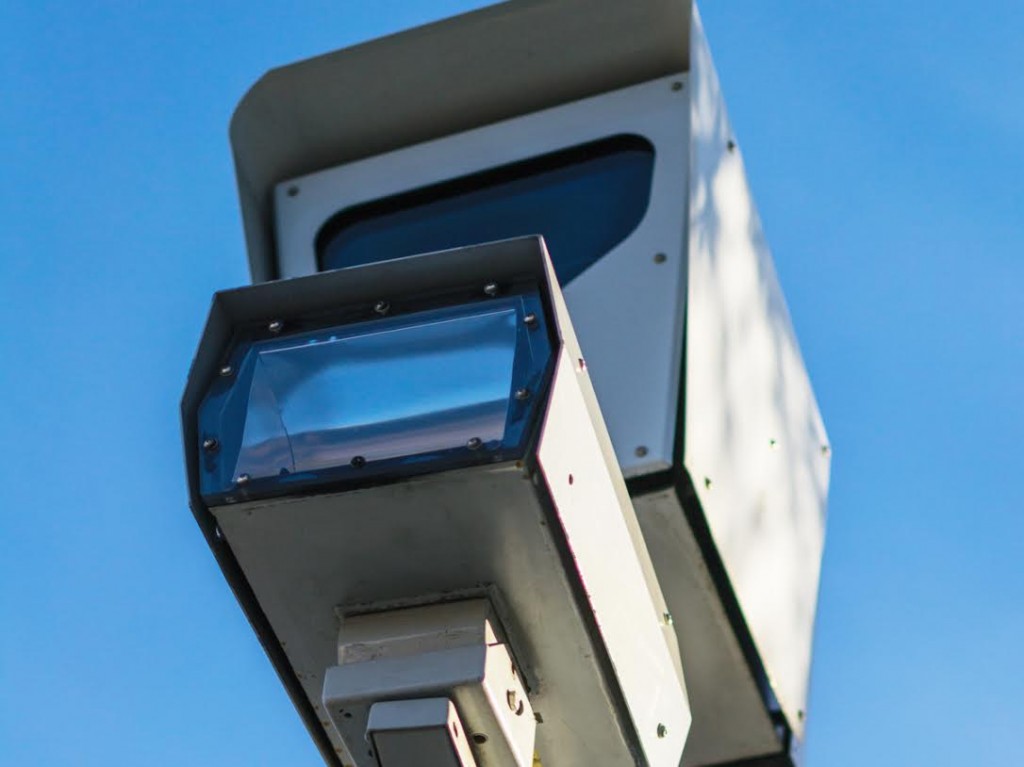
Riverside has removed the cameras at many of the red lights around the city. These cameras had been running for seven years when the city council voted to turn them off after the 2013 election; they were actually deactivated in September. These cameras were installed to help catch people running red lights, as well as to help prevent crashes at intersections. The system, though paid for by the tickets issued resulting from their use, did not generate enough revenue to warrant their continued use.
Now these cameras, which had been provided and operated by a private company, are being removed by that same company, as the equipment is expensive to leave sitting without use. Eventually, the entire system, including the poles on which the cameras were mounted and the boxes housing them, will be removed by the company.
The removal of the camera system is a good riddance for the people of Riverside. First, the system failed to pay for itself (and the costs relating to the tickets, such as courtroom expenses), much less provide a net increase in revenue for the city. This is astonishing, considering that the citations issued by the system carried fines twice that of a normal police citation. If the system could not, when generating twice the revenue that police do with tickets, prove economically viable, then it is only logical to discontinue its use.
Furthermore, the cameras, unlike a police officer, have no ability to judge what is happening in a particular situation, such as when a driver makes a rolling right turn. They only see that someone is in the intersection to some degree when the light is red, leading to a citation. The camera, objectively speaking, is absolutely correct in identifying when a car is in an intersection, but has no way to tell the intent of the driver when they are inside that intersection.
A police officer observing the intersection (assuming the officer is not as strict as the camera itself) could allow someone who underestimated the time left before the light turns from yellow to red go unimpeded, while the light would never fail to mark that driver down for a ticket. On the other hand, a police officer could tell just as easily as the camera when a person speeds through an intersection after the light turned red, and is fully justified in issuing the ticket in such a case. Hence, the traffic camera is a far more punitive method of controlling traffic than is necessary, when a police officer in the same capacity could fairly judge when a ticket is necessary.
With the cameras removed, and insufficient police officers to monitor every intersection, the issue remains of how exactly the city will prevent people from violating traffic law. Of course, the city cannot stop people from breaking the law per se; having a law and punishment for breaking it does nothing to prevent it from being broken, it only discourages it. It is necessary, however, to have measures in place in lieu of the cameras to fight against potential lawbreakers on the road. Obviously, there are still police officers, and they will, as they always have, cite drivers for violating traffic law. However, to discourage drivers beyond the normal force of police patrols, there is need for alternate, and more constant deterrent.
Perhaps the best option for this deterrent is to use the infrastructure left behind by the camera system as if there were still cameras there. The company contracted to run the cameras has removed them, but for the moment, the poles are still there, and, to the uninformed driver, will appear to still be functional. The odds are that if the poles are left there, even with no cameras in them, drivers will believe they are still being actively monitored, and will adjust their actions accordingly. The expense of this system would be little more than the cost of buying the poles off the company so they do not remove them (which will probably happen within a few weeks). Perhaps it would not help raise money for the city, as the citations from the cameras did, but keeping the poles could reduce the incidence of traffic violations — the intent of the cameras in the first place — simply because people think they might be cited. Thus, both the city and the citizens benefit from this arrangement — the city does not have to deal with prosecuting offenders, and the citizens do not have to deal with the hassle of overpriced tickets for slight violations.








